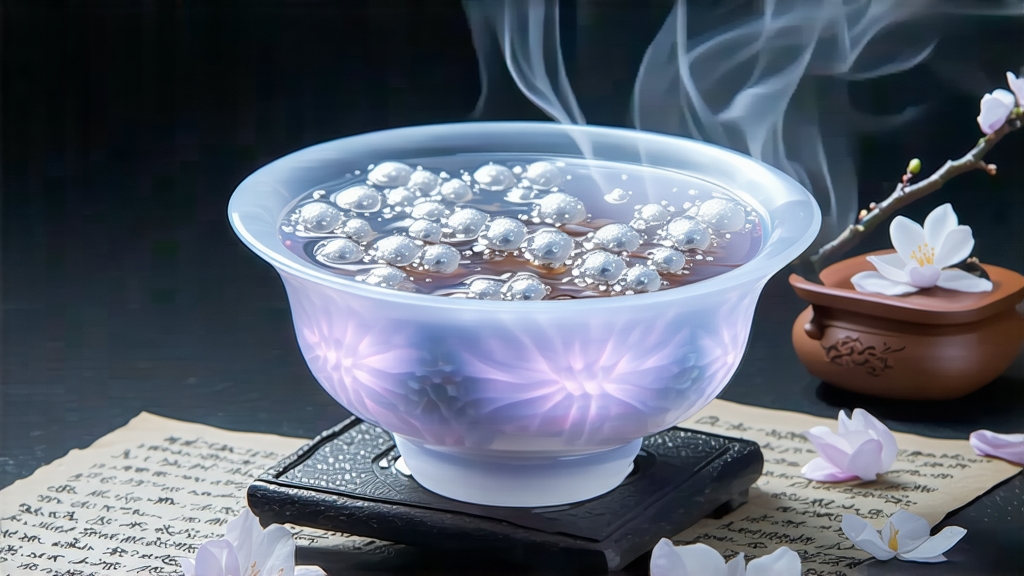
White tea is the quietest chapter in the long epic of Chinese tea, and within that chapter the cultivar known as White-Hair Silver Needle (Bai Hao Yin Zhen) is the hushed couplet that connoisseurs recite when they want to taste moonlight itself. Unlike the roasted drama of oolong or the fermented depth of pu-erh, Silver Needle asks for nothing more than time, mild air, and a glass vessel willing to let light pass through. The result is a liquor so pale that it seems to be the ghost of water, yet so fragrant that a single sniff can slow the heartbeat of anyone raised on coffee and calendar alerts.
Historical whispers place the birth of Silver Needle in the coastal county of Fuding, northern Fujian, during the early years of the Song dynasty (960-1279). Imperial tribute lists from 1115 CE mention “silver buds” sent northward on fast horses, wrapped in bamboo-leaf padding and wax-sealed to keep their perfume from escaping before reaching the capital. Those buds were not yet the fully formed Silver Needle we steep today; they were experimental gifts from monks who noticed that the down-covered tips of the local Da Bai cultivar stayed fragrant long after other leaves had withered into hay. Three centuries later, during the Ming, the technique of simply air-drying those tips without any kneading or pan-firing was codified. The Qing court reduced the annual tribute to a minuscule eight kilograms, making Silver Needle rarer than civet musk and, paradoxically, preserving the method in its most austere form.
Strictly speaking, only two tiny areas are authorised by the Chinese agricultural bureau to label their buds “Zhen” (needle): Fuding and the neighbouring Zhenghe county. Within Fuding, the hamlets of Taimu Mountain enjoy a maritime-continental climate where morning fog lingers until ten o’clock, bathing the tea gardens in 85 % humidity while the thermometer refuses to rise above 28 °C. These are ideal conditions for the slow enzymatic oxidation that white tea requires; too much sun and the buds redden, too little breeze and they sour. Zhenghe, slightly higher and cooler, produces a plumper needle with a peach-fuzz down that tastes of pine pollen rather than marine salt. Purists treat the two origins like the Left and Right Banks of Bordeaux: siblings, not twins.
Plucking begins on the first dry morning after the Qingming festival, when the buds measure 2.5–3 cm and still wear their cricket-wing coat of white trichomes. One kilogram of finished Silver Needle demands between 28 000 and 30 000 individual buds, all picked by fingernails, not blades, to avoid the micro-oxidation that scissors can trigger. The work is matriarchal: grandmothers and daughters move down the rows in silent choreography, baskets slung low on their backs so that the buds do not crush one another. By noon the harvest is complete; by one o’clock it is already withering.
Withering is the only “processing” Silver Needle acknowledges. The buds are laid two fingers deep on bamboo trays stacked like ventilated shelves inside a sun-proof barn. For forty-eight hours they rest while mountain air, scented by loquat blossoms, passes above and below. Every six hours a master tea handler—always someone who has apprenticed for at least seven seasons—rotates the trays 180 degrees so that each bud spends equal time in the slower-moving centre. Around hour thirty, the buds begin to exhale; their moisture drops from 75 % to 20 %, and the trichomes turn from bright white to the muted silver that gives the tea its name. No machine, no oven, no hand ever touches the bud again except to move it. When the handler pinches a bud and it snaps cleanly, the withering is complete. A final half-hour “sun-bath” at seven a.m. the next day fixes the aroma, after which the buds are immediately packed in triple-lined kraft paper and left to nap for at least four weeks so that residual moisture can equalise. Only then is the tea offered to the market.
Storage is the forgotten half of white-tea lore. Silver Needle is unique among Chinese teas in that it improves—gaining depth, not dust—when kept dry, dark, and well-ventilated for up to fifteen years.